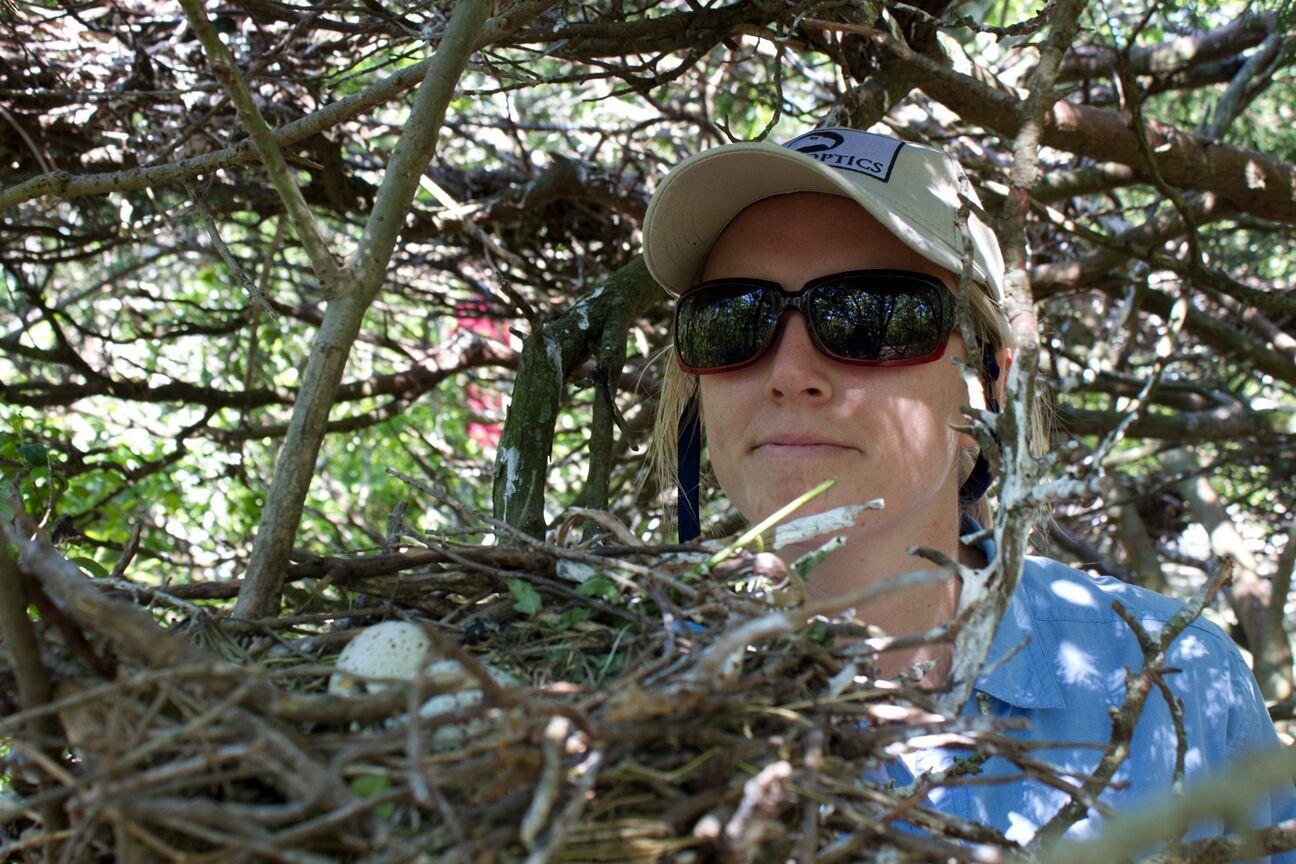In the early 1970s, no one knew for certain how many waterbirds, such as Brown Pelicans, Great Egrets, Royal Terns, and other species that concentrate in coastal area, actually nested in the state. That meant that no one could guess what impact human activities might have on these birds. Therefore, Dr. James Parnell, a UNC-Wilmington professor, and his students undertook a project to characterize the habitats these birds were using in North Carolina and count all of the breeding pairs found there.
This effort was called a census because it was an attempt to count all of the individuals in a particular area, just as the U.S. Census counts all people in the United States every ten years. After a few setbacks, Dr. Parnell and his partners completed the first statewide census in 1977. Because it took so many resources and so much effort, it was repeated at three-year intervals. Forty years later and fourteen more censuses later, the North Carolina colonial waterbird census is still providing valuable data, particularly population trends, spatial distribution, and habitat types used. Similar censuses in alternate years provide numbers of nesting American Oystercatchers, Piping Plovers, and Wilson’s Plovers.

The colonial waterbird census—so called because it focuses on species that nest in groups called colonies—still involves a great deal of resources. Throughout the state, over 120 sites are visited by a core group of NC Wildlife Resources Commission biologists and the biologists who manage other sites, including Audubon North Carolina, the National Park Service, NC Coastal Reserve, and NC State Parks. For example, Audubon staff and volunteers will count all of the colonial nesting birds on Audubon’s managed sites, and they assist with other areas as much as possible to help get the job done. All of this counting is compressed into a brief period of time from May to June in order to ensure that each species is counted during the period of time when the greatest number of pairs are incubating eggs. Add in inclement weather, unexpectedly early or late nesting by some species, managing census work with other projects, and wrangling staff and volunteers’ schedules to do the work - it’s a big undertaking.
Once collected, the counts are entered into a database that is maintained by the NCWRC with funding support from the U.S. Army Corps of Engineers, which has been involved with nesting birds through its creation of dredged-material islands that many species use for their nests. This information is then used to establish population goals, identify species of concern, and direct research and management activities. When combined with counts from other states’ efforts in the region, health of populations all across the southeast and the Atlantic Flyway can be assessed. However, no matter how large-scale conservation planning and actions are, the foundation of the census rests on the straightforward, “simple” science of counting nests, one-by-one.



